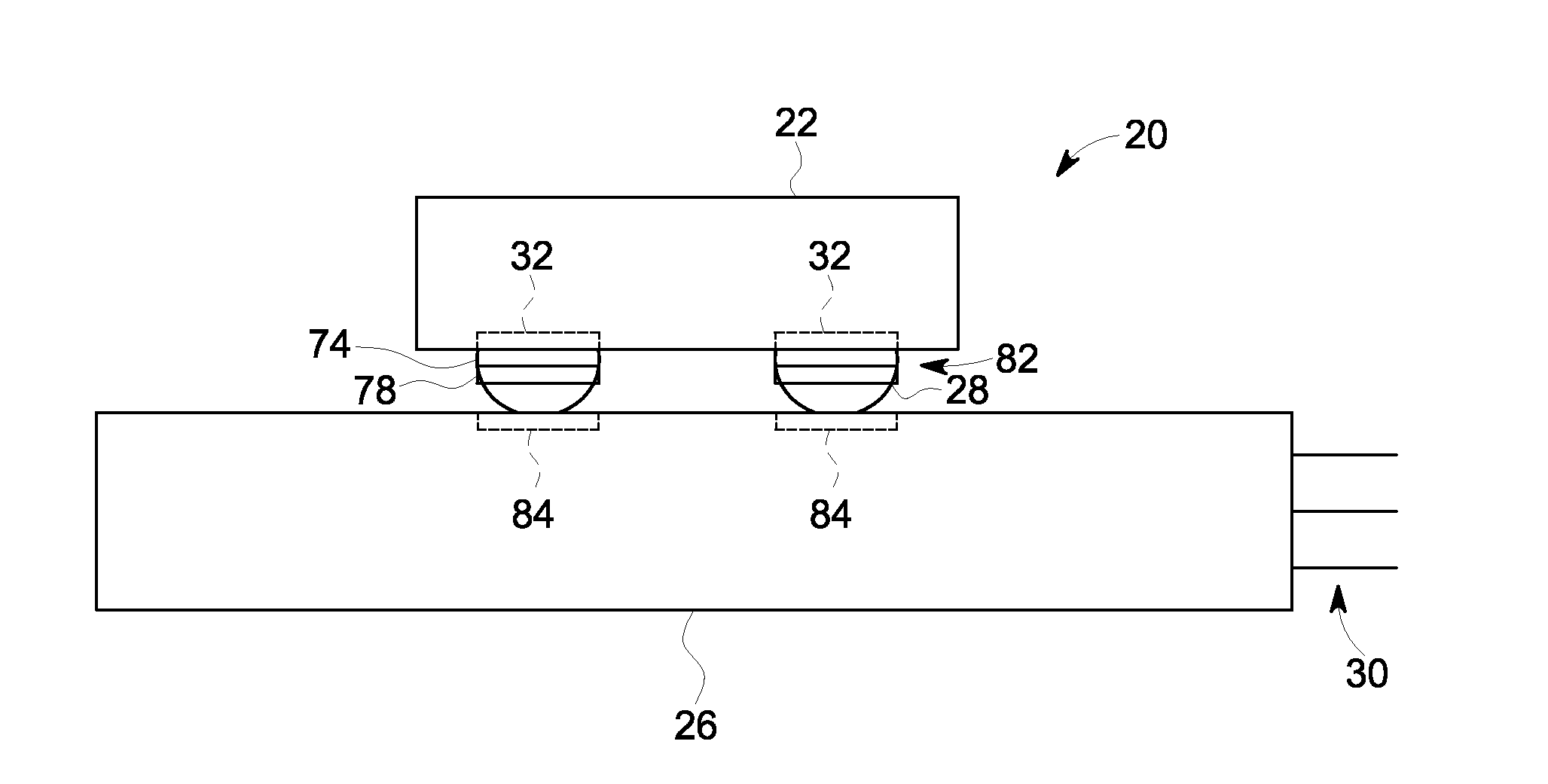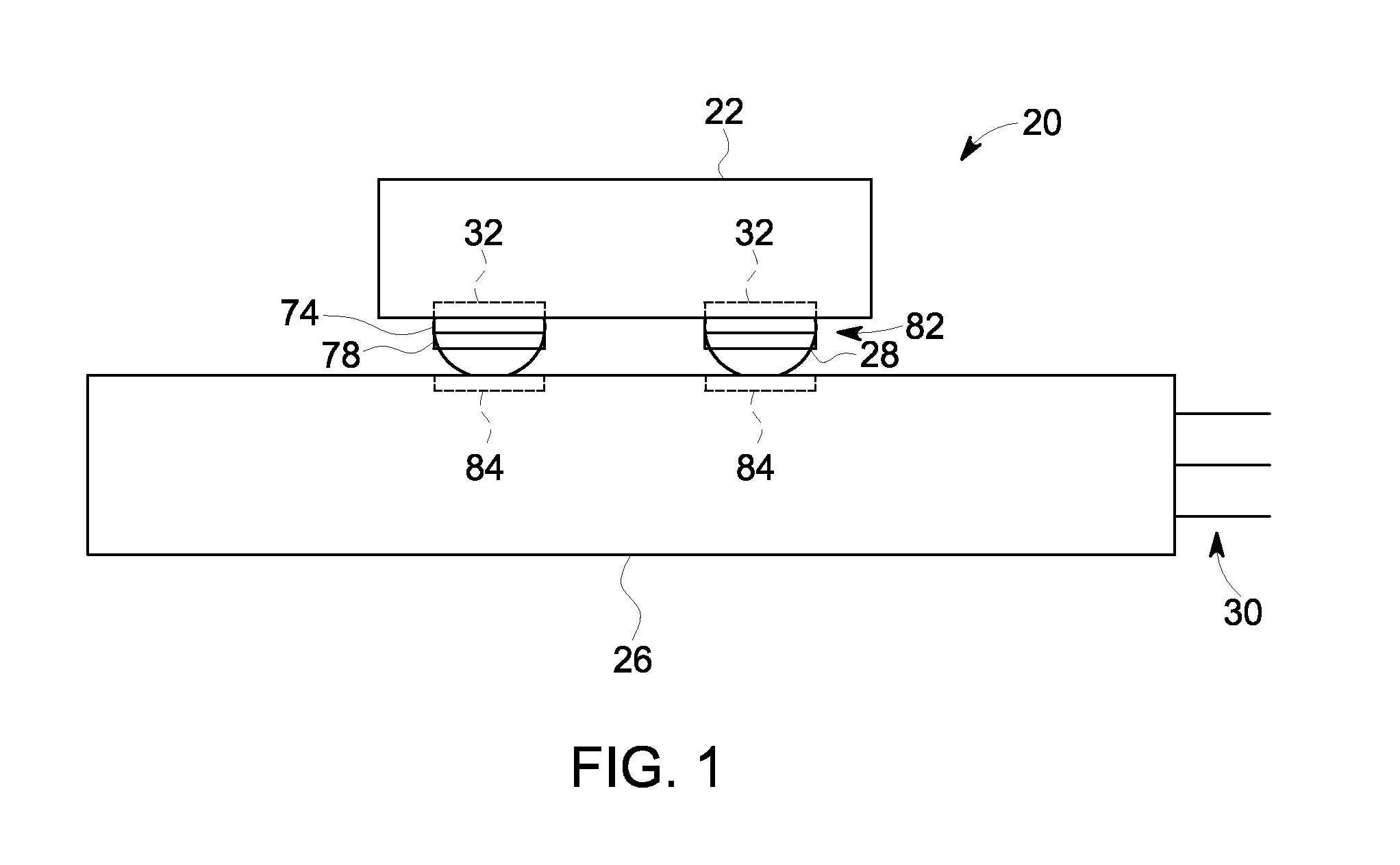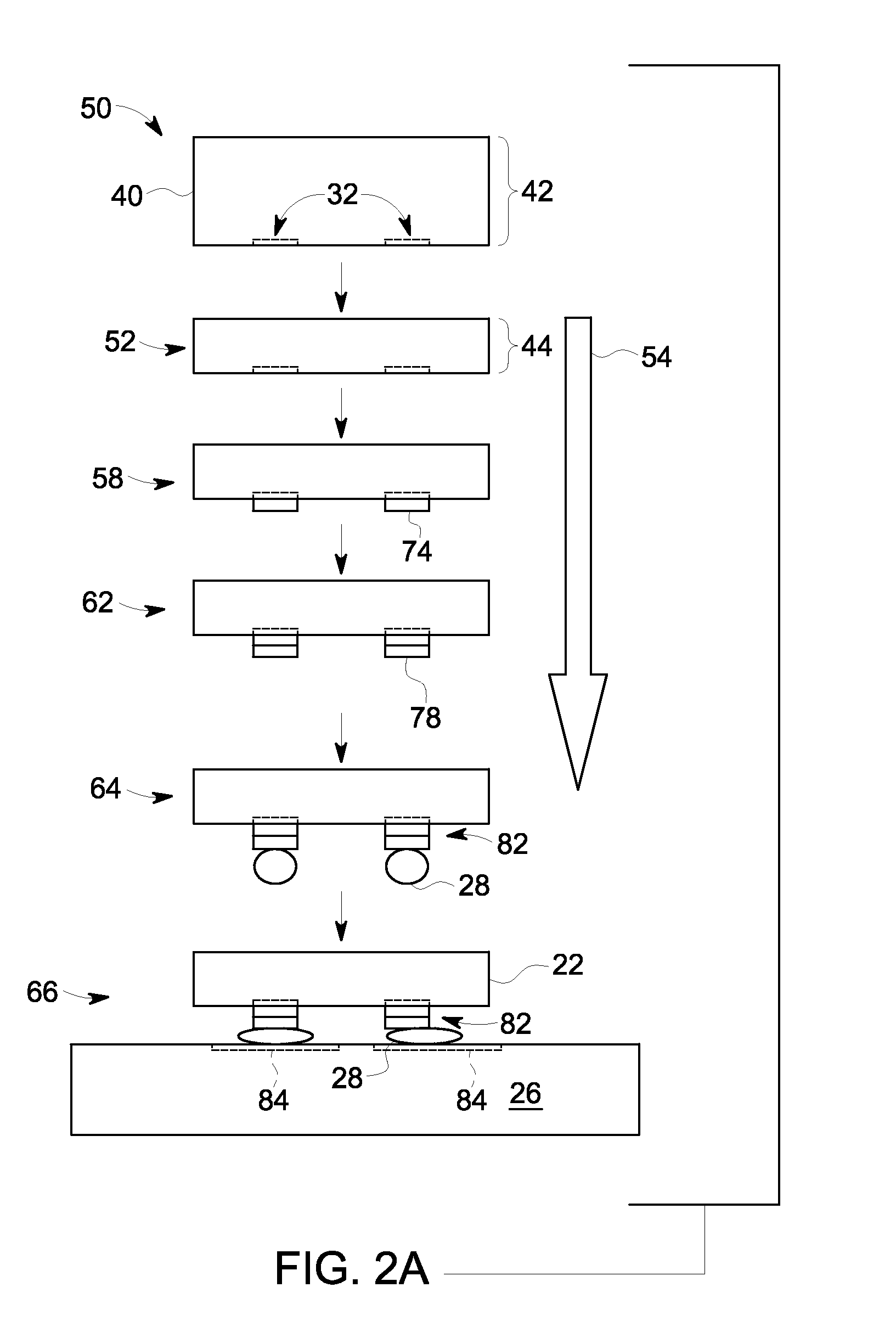Sensor assembly for use in medical position and orientation tracking
a technology for positioning and orientation tracking, applied in the field of sensors, can solve the problem that the contact pad is not suitable for receiving a soldered connection
- Summary
- Abstract
- Description
- Claims
- Application Information
AI Technical Summary
Problems solved by technology
Method used
Image
Examples
Embodiment Construction
[0019]As discussed herein, a position and orientation sensor assembly is discussed that is suitable for use in a medical device, implant or instrument. In certain embodiments, the sensor assembly may include a magnetoresistance sensor, such as a two-axis electromagnetic sensor, providing six-degrees of freedom. In implementations where the position and orientation sensor is originally configured for wire bonding to an interposer that is subsequently soldered to a printed circuit board, contact pads on the sensor may be unsuitable for a soldered connection. The position and orientation sensor may, therefore, be modified by the application of various additional metallization layers so that the sensor may be interconnected directly to a substrate using an approach better suited for achieving a small form factor for the finished sensor assembly, such as a flip chip approach. For example, in implementations where the original position and orientation sensor has interconnect pads that are...
PUM
 Login to View More
Login to View More Abstract
Description
Claims
Application Information
 Login to View More
Login to View More - R&D
- Intellectual Property
- Life Sciences
- Materials
- Tech Scout
- Unparalleled Data Quality
- Higher Quality Content
- 60% Fewer Hallucinations
Browse by: Latest US Patents, China's latest patents, Technical Efficacy Thesaurus, Application Domain, Technology Topic, Popular Technical Reports.
© 2025 PatSnap. All rights reserved.Legal|Privacy policy|Modern Slavery Act Transparency Statement|Sitemap|About US| Contact US: help@patsnap.com



